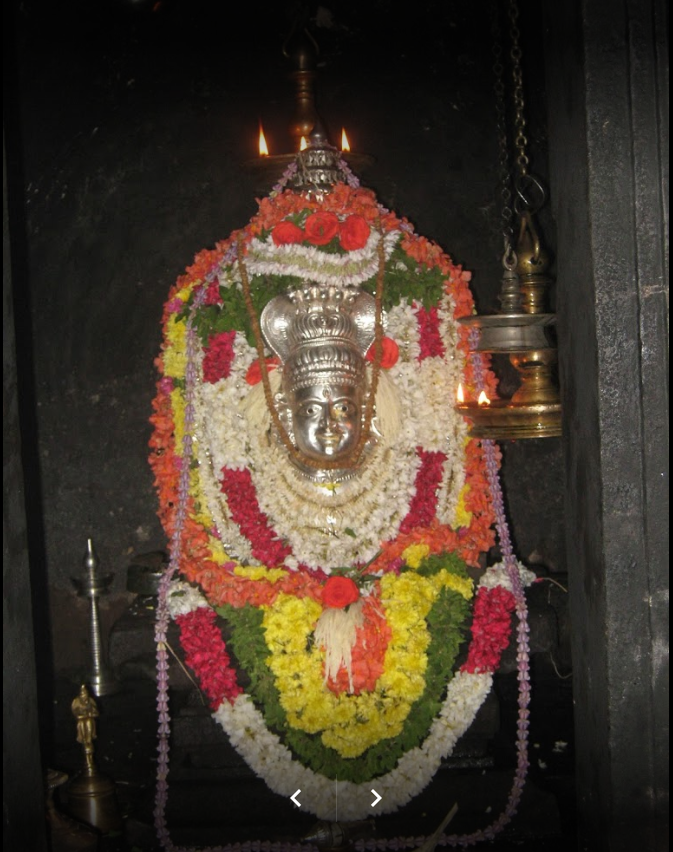About
Ulagalandha Perumal Temple is a temple dedicated to Vishnu located in Kancheepuram, Tamil Nadu, India. Constructed in the Dravidian style of architecture, the temple is glorified in the Divya Prabandha, the early medieval Tamil canon of the Azhwar saints from the 6th–9th centuries AD. It is one of the 108 Divyadesam dedicated to Vishnu, who is worshipped as Ulagalantha Perumal and his consort Lakshmi as Amudavalli. The temple is believed to have been built by Pallavas, with later contributions from Medieval Cholas, Vijayanagar kings and Madurai Nayaks.
The temple is found in Big Kanchipuram, and situated close Kamakshi Amman Temple. The temple complex actually houses four Divya Desams in its different precincts, namely Thirukkarvaanam, Thirukaaragam, Thiruneeragam, and Thiruooragam, that last of which is present with in the sanctum sanctorum of the main temple.
Vamana, a dwarf and one of the ten avatars of Vishnu, appeared here to quell the pride of Asura king Bali. Ulagalantha Perumal is believed to have appeared to king Mahabali and the Azhwars. Six daily rituals and a dozen yearly festivals are held at the temple, of which the chariot festival, celebrated during the Tamil month of Chittirai (March–April), is the most prominent. The temple is maintained and administered by the Hindu Religious and Endowment Board of the Government of Tamil Nadu.
Legend
Bhagavata Purana describes that Vishnu descended as the Vamana avatar to restore the authority of Indra over the heavens, as it had been taken by Mahabali, a benevolent Asura King. Bali was the grandson of Prahlada. King Mahabali was generous, and engaged in severe austerities and penance and won the praise of the world. With the praise from his courtiers and others, he regarded himself as the all powerful in the world. Vamana, in the guise of a short Brahmin carrying a wooden umbrella, went to the king to request three paces of land. Mahabali consented, against the warning of his guru, Sukracharya. Vamana then revealed his identity and enlarged to gigantic proportions to stride over the three worlds. He stepped from heaven to earth with the first step, from earth to the netherworld with the second. King Mahabali, unable to fulfill his promise, offered his head for the third. Vamana then placed his foot and gave the king immortality for his humility. In worshiping Mahabali and his ancestor Prahláda, he conceded sovereignty of Pátála, the netherworld. Some texts also report that Vamana did not step into the netherworld, and instead gave its rule to Bali. In giant form, Vamana is known as Trivikrama. The legend is associated with the Thrikkakara Temple in Kerala and also with this temple and Ulagalantha Perumal Temple, Tirukoyilur.
According to the historian Nagaswamy, based on the inscriptions and the location of the temple, it is the oldest temple in Kanchipuram. There is another account that the temple is developed by Rajendra Chola I (1012–1044 CE). The temple has 15 inscriptions from various dynasties like Pallavas, Chola and Sambuvarayars. The earliest inscription is from 846 CE during the regime of Nandivarman III (846 - 869 CE). There is a Chola inscription dated 1110 CE during the reign of Kulothunga Chola I (1070 - 1120 CE) indicating his visit to the temple and his gift of land to the temple whose income was to be used for the maintenance of the temple. Another similar inscription indicates the donation of a village by the king on behest of his queen Kampamadeviyar. There are inscriptions from later Chola kings like Rajadhiraja Chola II (1166–78) and Rajaraja Chola III (1216-56) indicating various records of gifts to the temple. There are also inscriptions from minor chieftains like Vijaya Gandagopala indicating gifts to the temple. The inscriptions refer the main deity by various names like Thiru Uragathu Ninru-arulina Paramaswamin, Thiru Uragathazhwar and Tiru uragathu Emberuman. The Sambuvarayar rule of the 16th century records the gift of a pond and a grove in Sevvanmedu village. The temple still continues to possess this grove. The inscriptions in the temple also indicate increased trade and commerce during the Pallava period, with licenses provided to shops like oil, ghee, arecanut, vegetables, flowers, coconut, sugar, cloth and sandal. The temple has not received a single donation from the ruling Vijayanagar Empire, though the nearby temples received generous donations, indicating that the temple had sources of income. From those days Pancharatra Agama was followed in the temple, though all the surrounding people followed Vaikhanasa and Pancharatra Agama.
The temple priests perform the pooja (rituals) during festivals and on a daily basis. As at other Vishnu temples of Tamil Nadu, the priests belong to the Vaishnavaite community, a Brahmin sub-caste. The temple rituals are performed six times a day: Ushathkalam at 7 a.m., Kalasanthi at 8:00 a.m., Uchikalam at 12:00 p.m., Sayarakshai at 6:00 p.m., Irandamkalam at 7:00 p.m. and Ardha Jamam at 10:00 p.m. Each ritual has three steps: alangaram (decoration), neivethanam (food offering) and deepa aradanai (waving of lamps) for both Ulagalantha Perumal and Amuthavalli. During the last step of worship, nagaswaram (pipe instrument) and tavil (percussion instrument) are played, religious instructions in the Vedas (sacred text) are recited by priests, and worshippers prostrate themselves in front of the temple mast. There are weekly, monthly and fortnightly rituals performed in the temple. There are two major festivals celebrated in the temple - Brahmotsavam during the Tamil month of Thai (January - February) and Vamana Jayanthi during the Tamil month of Avani (August - September) on Sravanam star.















